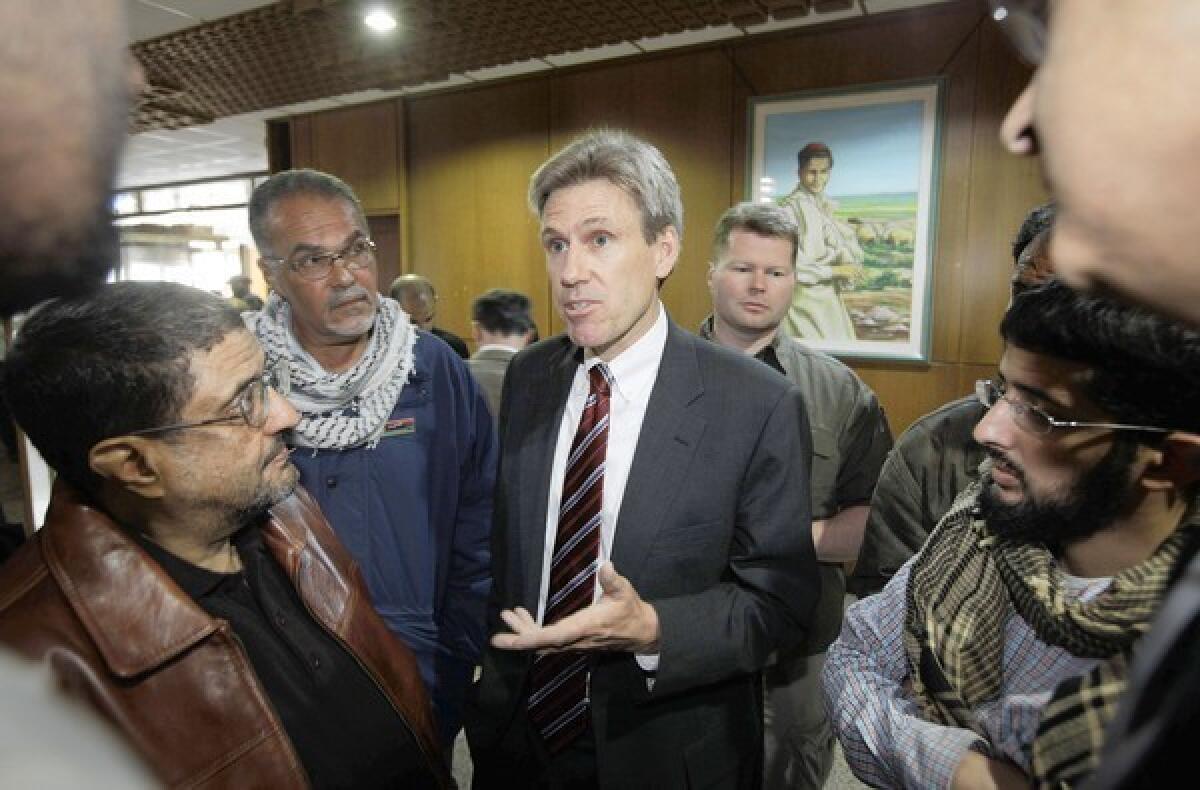Stevens’ photo on the front page

Reader reaction was strong to Thursday’s front-page photo of a mortally wounded J. Christopher Stevens, the U.S. ambassador to Libya.
Stevens was killed Tuesday along with three other Americans in an attack on the U.S. consulate in Benghazi, Libya. As the article that accompanied the photo noted, he was the first U.S. ambassador killed in the line of duty since 1988.
Some readers called the photo graphic, unwarranted, inappropriate, disgraceful, gratuitous and insensitive.
TIMELINE: ‘Innocence of Muslims’ unrest
“It was very distasteful and disrespectful to post the picture of Stevens, in death in such graphic detail, on the front page,” Donna Shontell of Sherman Oaks said. “This plays into the hands of those responsible for these types of horrendous acts. I respect The Times for excellence in journalism, not for tabloid exploitation.”
“Stevens was a dedicated, brave, and honorable man who died serving his country. He deserves our respect and gratitude,” Betsy K. Emerick of Monrovia wrote. “Instead, by printing that photo, you have taken away his dignity and turned his sacrifice into an opportunity for exploitation and sensationalism.”
“It seems to me a picture of the burning embassy in Benghazi would have been quite graphic enough,” Virginia G. Berg of Culver City wrote. “The ambassador’s family will never be able to forget the horrible pain and suffering he went through, and in my opinion they did not need to see this very graphic photograph to make it even worse.”
“Your front-page photo of a dying Stevens was unwarranted and inappropriate,” wrote Tim Sunderland of Rancho Cucamonga. “With freedom of the press comes a responsibility to honor the most sensitive of moments. This was one of them, and The Times failed.”
David Latt of Pacific Palisades asked: “What was gained by this photograph? Was it newsworthy? We know the ambassador was attacked by a mob. We know he died. Can you imagine the added grief his family and friends felt when they viewed that photograph? And what about your readers? What was gained by attacking your readers’ sensibilities?”
Editors discussed the photo at length on Wednesday. Managing Editor Marc Duvoisin explained the thinking:
What makes the photograph disturbing to some readers is also what makes it newsworthy. An assault on a U.S. diplomatic mission, resulting in the death of an ambassador, is a very rare and significant event. The circumstances here made it particularly newsworthy: U.S. military action helped Libyans topple a dictator a year ago, and Stevens was well known to Libyans and admired by many.
The image of the stricken ambassador, apparently being tended to by Libyan civilians, vividly captured this important event. Times editors, after careful consideration and discussion, selected the least grisly of the available images. Our job is to present an unvarnished picture of the news, without carelessly offending our readers. That is the balance we tried to strike with the Stevens photo.
More to Read
A cure for the common opinion
Get thought-provoking perspectives with our weekly newsletter.
You may occasionally receive promotional content from the Los Angeles Times.










